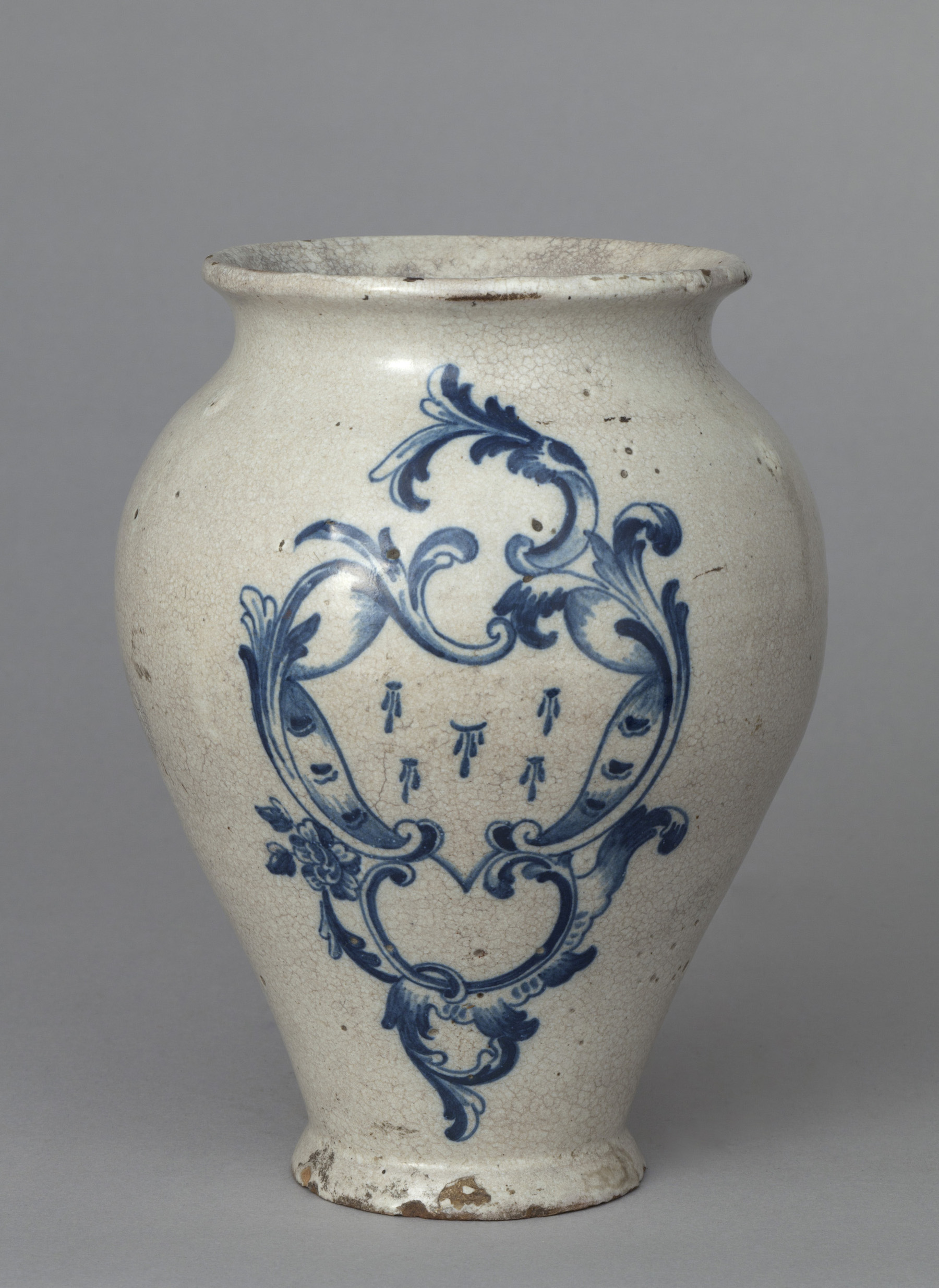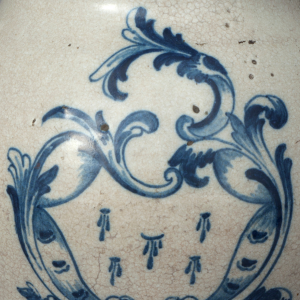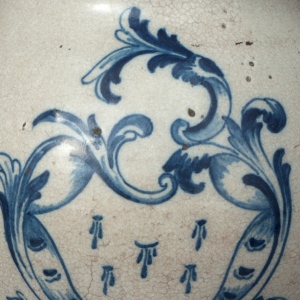Apothecary Pot
Author: Unknown
Origin: Darque Factory, Viana do Castelo, Portugal
Dating: 18th century
Material: Clay
Dimensions (cm): 23,3 x Ø 18,4
Inv. no.: PD0312
The pharmacist profession has existed for centuries, dating back to the origins of humanity. However, the first pharmacies in the world – apothecaries – appeared around the 10th century, in convents in France and Spain.
In Portugal, the first apothecaries appeared in the 13th century. The first reference to the profession is found in a document promulgated by King Afonso IV, in 1338. In 1449, King Afonso V granted a charter of privileges to the apothecaries: the Carta Régia dos Boticários do Reino.
Apothecaries were responsible for the treatment and cure of diseases by producing the necessary substances for the purpose. The containers used to store the products were made of different materials and had different typologies, depending on their function. Those used to store solid and viscous substances – such as herbs, spices, preserves, ointments and electuaries – were commonly cylindrical or ovoid (pots and jars). Liquid substances – such as syrups or oils – were stored in bottles.
Saints Cosmas and Damian are the patrons of pharmacists.







